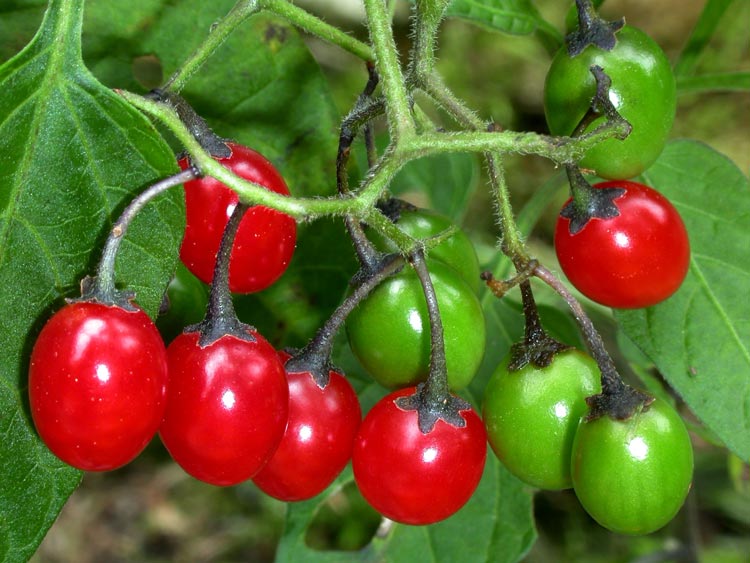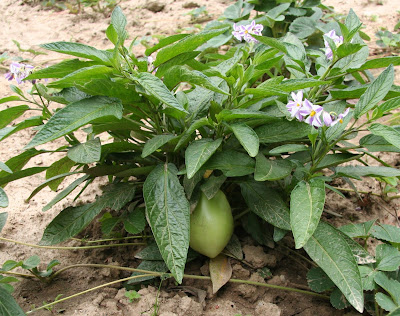This quote has been swirling through my head lately, especially when I encounter advertisements for the latest hyper-hybrid, monster-blooming shrub or perennial. The Proven Winners plants, for example, have become the Barry Bonds of nursery plants. Or what’s worse, now we have celebrity gardeners like P. Allen Smith’s who have trademarked their own laboratory-bred Platinum Collection plants. The American horticultural industry seems bent on producing engineered plants that bloom eternally. Mophead hydrangeas no longer mark the beginning of summer, thanks to the Endless Summer Hydrangeas (trademark). Encore Azaleas promise blooms spring, summer, and fall. What does a fall blooming azalea mean, anyways?
Of course, there’s nothing wrong with loving big flowers. Just this week, I passed a neighbor’s peony border with softball-sized magenta blooms. It was glorious. But a garden with nothing but genetically-engineered super-bloomers is a like inviting only models to a dinner party. When prettiness trumps character, we all lose.
Which is perhaps why this year I have been seduced by an ancient family of plants. During some deep winter garden reading, I started to make connections between several bizarre, yet fascinating plants. Turns out, they all belong to the remarkable nightshade (Solanaceae) family. Plants of the nightshade family are the perfect antidote to overly-bred bloomers. First, most of these plants are anything but pretty. This year, I’m growing the rather grotesque Naranjilla plant (Solanum quitoense). It is a nasty looking plant: its massive leaves are covered with deep purple spikes. This ancient Incan plant produces little orange fruits that I understand taste like a cross between rhubarb and lime.
Solanum quitoense in a mixed border [image from Landcraft Environments LTD]
Perhaps the dark and dangerous history of these plants is what makes this family so seductive. While some of the plants create the most nourishing comfort foods on the planet, others are downright deadly. Snakeberry (Solanum dulcamera) has egg shaped red berries just like a cherry tomato that contain high levels of the phytochemical solanine. Solanine is known to cause birth defects, hallucinations, convulsions, fits of laughter, coma, and even death. Even potatoes and tomatoes contain small levels of solanine. Other nightshades contain tropane alkaloids. The term tropane is named after the Greek Fate, Atropos, who cut the thread of life. Tropane alkaloids are found in nightshade ornamentals like Datura and Brugmansia.
Like living dangerously? Several respectable seed sources sell Garden Huckleberry (Solanum nigrum var. melanocerasum), a variant of the deadly nightshade. Several regions of our country make jams and pies from the berries of this plant. Be careful though: others claim this plant causes defects of the central nervous system. Want to play it safe, but still explore the wonderfully bizarre world of nightshades? Try the Pepino Melon (Solanum muricatum), a compact South American shrub that produces fruit the size of a large goose egg. Beautifully pendulous cream colored fruit has purple stripes. The fruit has sweet, mild flesh that is somewhat melon-like.
Nightshades are a reminder that there once was a time when plants could strike fear in the human heart. This year, I passed on the goopy Endless Summer Hydrangea and instead planted a nasty looking Naranjilla. It’s massive leaves studded with purple spikes greet me each morning, a reminder that out of fear and understanding, comes respect.
Want seeds of some of the plants mentioned?
Baker Creek Heirloom
Top Tropicals







Fascinating, as ever.
ReplyDeleteI find the idea of trademarking living plants (or gene sequences for that matter) incredibly crass.
Hello Thomas.
ReplyDeleteThis is so interesting. Just the other day I happened to read in the *Ball Complete Book of Home Preserving* that one shouldn't preserve or eat too many green tomatoes because of the solanine content. And this morning woke up wondering who had first understood that ripe tomatoes, of the entire plant, are safe to eat. How did they figure it out--no randomized trials or lab tests those thousands of years ago.
So was happy to read your post introducing other members of this family.
I agree 100% about the monster plants and brands mentioned above. Not to mention that Endless Summer hydrangeas, for all their hype, don't grow that well in my area. Give me an old-time Annabelle any day.
I should never comment on blogs when sick. I get confused.
ReplyDeleteIt's *patenting* living matter that doesn't sit well with me. I'm unclear on what trademarking plants does and doesn't mean.
You have touched upon a controversial subject.
ReplyDeleteSome gardeners and garden designers are happy when scientists tweak nature to create plants that satisfy a market need.
Many of these products are so popular that both growers and retailers find themselves in a sold-out position early in the gardening season. That is very good for the gardening business.
I suppose that there will always be those that only want beautiful models at their dinner table. While you and I might find such a dinner to be boring and shallow, others will find it exciting.
Of course, such people will never understand the drama created when grotesque plants are added to a garden.
I had the same initial reaction as Lisa and Robb. I hate those warnings on plants that say it is illegal for you to propagate them asexually. As far as I'm concerned, plants generally reach a point where they need to be divided, and the idea that I am legally bound to destroy the divisions rather than sharing them with others strikes me as the antithesis of what gardening is about. But I realized that it is patented plants that carry those warnings (and which I therefore try not to buy). I did a little search on the difference between patented and trademarked plants, and found this explanation from Oregon State University: http://extension.oregonstate.edu/news/story.php?S_No=820&storyType=garde. As far as I can tell from this, if a plant is trademarked, but not patented, I'm free to give away divisions of that plant to friends and family, but I'm not allowed to tell them what the cultivar is called! LOL -Jean
ReplyDeleteJean, thank goodness I can't remember my own name half the time, what more the trademaked name of my garden gifts! :)
ReplyDeleteInteresting article, added his blog to Favorites
ReplyDeleteSolanum quitoense, when I was in the Peace Corps in Panama my neighbors grew it. They called it anaranjio. It's very sour, but if you add enough sugar and water it makes a fine lemonaid type drink.
ReplyDeleteI had been having problems with the neighborhood kids in my garden. I planted Solanum quitoense and they haven't bothered the garden since. It's actually a beautiful plant, with large, fuzzy leaves with the purple spines along the mid-vein. But it's also a VERY good deterrent!
ReplyDelete